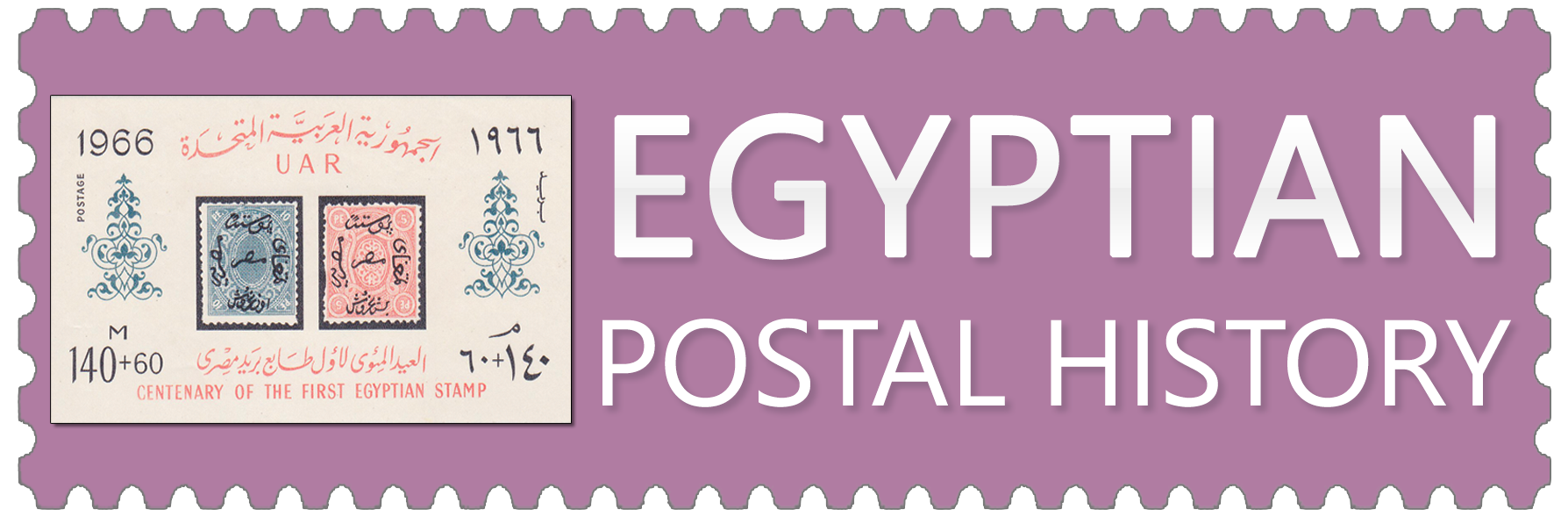PUBLISHER’S INTRODUCTION
This book presents the postage stamps of Egypt in the first one hundred years, from the issuing of the first stamp in January 1866, at the time of Khedive Ismael who ruled Egypt from 1863 to 1879 and who gave the Postal Services of Egypt his great attention and the infrastructure it needed.
The language of the first issue was Turkish, and the currency was the Turkish Para and Qirsh. One Qirsh was equivalent to forty Paras. As Egypt developed, the need for postal services grew and post offices were opened all over the country. Egypt’s political and social development is reflected in the different stamp designs that represent major events. How they developed through the various political systems in Egypt, from being part of the Turkish Empire, then becoming a British Protectorate, then under the Monarchy, then being declared a Republic.
The first director of the Egyptian Postal Service was Giacomo Muzzi, who had come to Egypt from Italy in about 1820. Before taking on this responsibility he was the owner and manager of Posta Europea, a very successful company that provided postal services all across Egypt before Khedive Ismael decided to buy it and appoint Mr. Muzzi as the first Postmaster General of Egypt. This explains why Italian was the language used to replace the Turkish language in the Second Issue, released in 1867. The language was later changed to French, then English, and sometimes combined with Arabic, the official language of the country. It depended on who the Postmaster was at the time.
Definitive stamps were supplied as the demand arose in terms of the numbers and values. In addition to issuing stamps for regular use, the Egyptian Government also issued commemorative stamps to mark special occasions and events, such as international exhibitions, conferences, anniversaries, and festivals. These were limited in duration for the occasion that they commemorated. Another type issued was the Postage Due stamp, for when the sender had put less than the correct value needed for the service. This enabled the Government to collect from the receiver the difference in value between what the sender had placed on the envelope and what should have been put.
For inter-governmental mail between different local governmental agencies, special stamps were issued for the first time in 1893, and were also used for sending governmental mail abroad.
In 1926 a new set of stamps was issued to cover the need for express post for those wishing to expedite the delivery of their mail. In 1952 express post stamps were discontinued. People can still send mail by express service, but using definitive stamps with the correct higher value.
The development of aviation opened the eyes of the Postal Service to the need for airmail stamps. These were issued in March 1926 and the government continued to issue high value stamps to be used for airmail.
Another service they provided was Semi-Postal stamps, where part of the value of the stamp was donated to charity or a special charitable cause for the benefit of the public.
In 1948 Israel was declared a state, which triggered a war in the Middle East between the Arabs and the state of Israel. During this war, Egyptian stamps were used in Palestine. After the war, the Gaza Strip came under Egyptian rule, which continued until 1967, when it was occupied by Israeli forces (except for the period in 1956 during the Suez War).
Although the intention of this album was to limit the presentation of stamps to the first one hundred years, ending on 1 January 1966, the use of Egyptian stamps in Palestine and the Gaza Strip continued until 1967 and it was decided to include all the stamps issued for use in Palestine, which ended in June of that year.
The stamps presented are organized chronologically, in the same order as the Stanley Gibbons Catalogue and Léon Balian’s Catalogue: Stamps of Egypt, with Egypt used in Palestine and Sudan. All the stamps are shown in full colour, and reduced in size to prevent fraudulent use and to limit legal liabilities. This album is part of a series of books entitled ‘The Postal History of Egypt under the Muhammad Ali Dynasty,’ published by Fercan Corporation.
